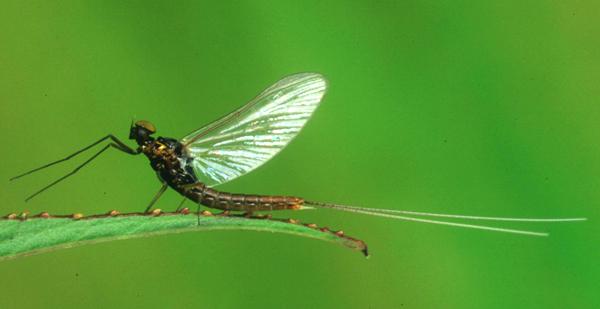Cloëon simile Eaton - Lake Olive
Phylum: Arthropoda - Class: Insecta - Order: Ephemeroptera - Family: Baetidae
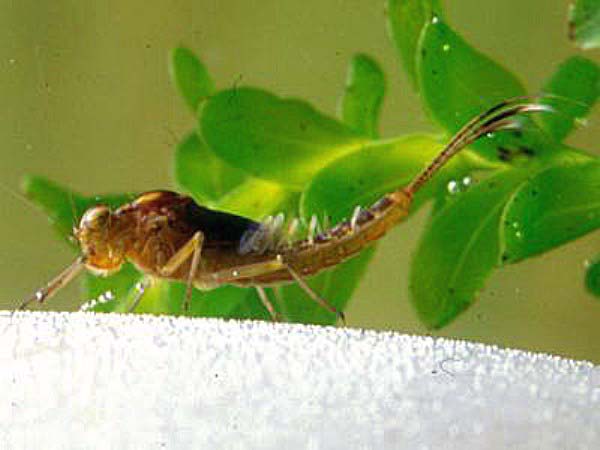
Note: strictly the genus name is Cloëon, but as people searching for information on the internet do not generally include accents (diacritical marks) such as the umlaut accent above the character ë, we have used the easier-to-type Cloeon in the main text of this page.
Nymph
The nymphs of Cloeon simile, the Lake Olive, and Cloeon dipterum, the Pond Olive, are very similar in appearance, and to tell the difference you need to examine the gill structures with a magnifying lens.
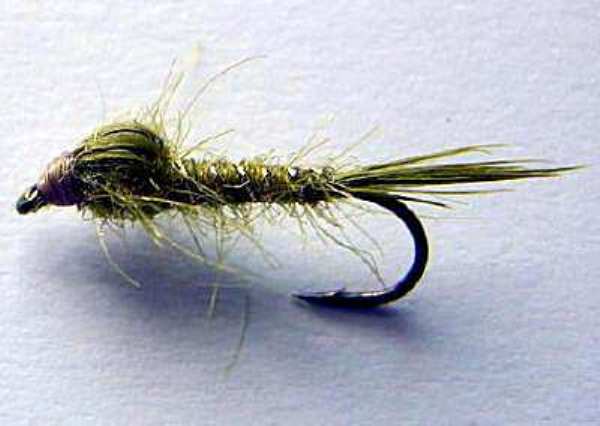
Any slim-bodied olive-coloured artificial nymph fished in the surface film seems to work well when Lake Olives are hatching. When there is no hatch a weighted nymph, such as a bead-headed Gold-ribbed Hare's Ear, is necessary to get down to where the trout are feeding.
As always when flyfishing, matching the hatch can make a big difference, but it's not merely a matter of making your fly the right size, colour and shape so that it looks like the insect you are trying to imitate. Most important of all, you need to make your fly behave like the natural insect. This is a subject I cover in detail in Matching the Hatch, and in my experience behaviour is the most important topic in flyfishing. Put simply, to be a really good flyfisher you need to know how aquatic insects behave, how trout behave, and how you need to behave in order to make your fly behave like a credible insect... and without scaring the fish!
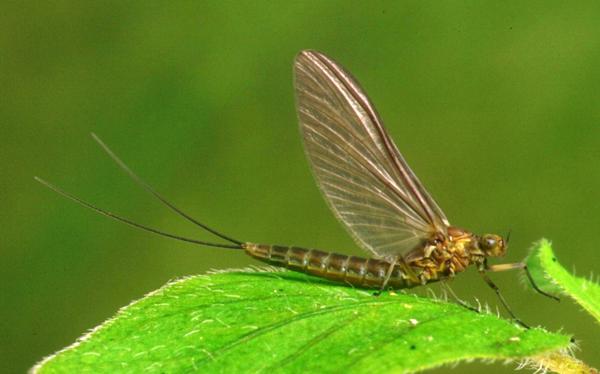
Dun or subimago
The Lake Olive is one of very few up-winged flies that occur in large numbers on some lowland lakes in Britain - Tal-y-llyn lake in mid Wales has good hatches - and in the margins of deep pools on some slow-flowing rivers. This fly is not usually found in small ponds; however, there its close relative the Pond Olive, Cloeon dipterum, is more common. The nymph is an agile darter..
The dun (a female is shown here and a male dun below) leaves the surface in open water, usually well away from the shore, and so when duns are hatching a dry fly can give good sport.
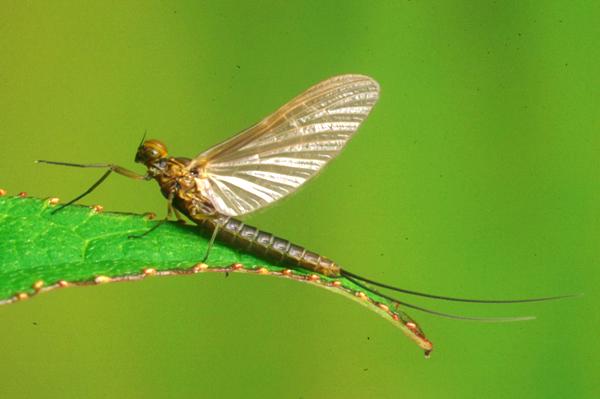
A good general imitation for all sorts of olive duns is that old favourite, Greenwell's Glory. A Rough Olive is just as effective, I find. Of course, a lot depends on how windy the weather is, because without a surface riffle the fishing can be very tough indeed, especially on bright summer days. That is when a closer imitation of the Lake Olive really can make a world of difference.
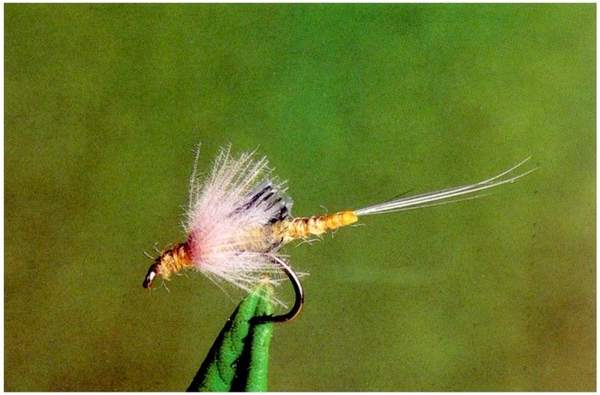
Peter Masters produced this very effective close imitation of the Lake Olive (although in my experience it is just as good when Pond Olives are hatching - the latter being a far more common fly on small stillwater fisheries, where Lake Olives are rarely if ever seen).
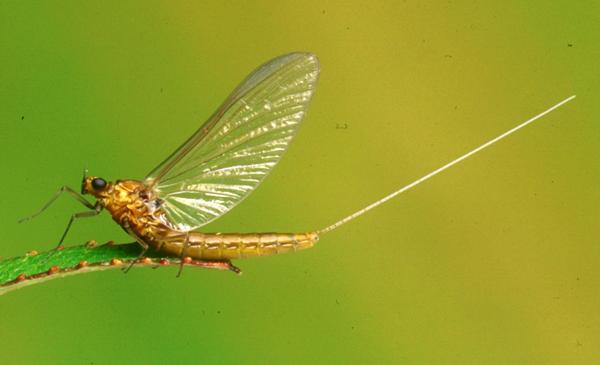
Spinner or imago
Commonly referred to as the Apricot Spinner, the female Lake Olive female spinner, shown here, lays her eggs on the surface from late afternoon on into darkness. A Tups Indispensable is a pretty good representation of the egg-laying spinner.
